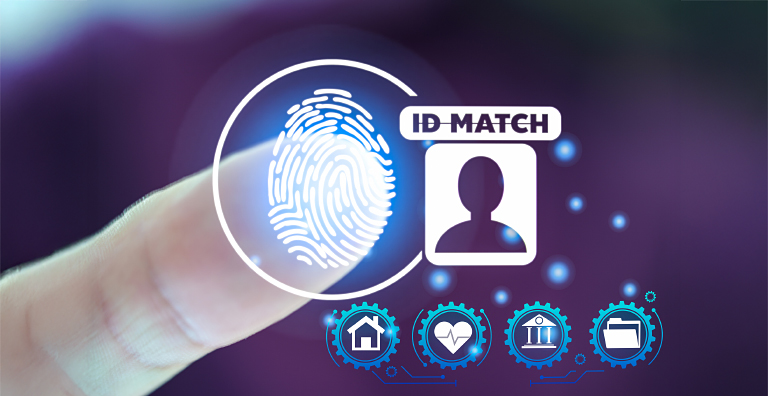Across the world, governments are transforming how they enroll and identify their citizens — and it’s changing everything. Long lines, paper forms and manual errors are giving way to faster, smarter and more secure systems. What’s driving this transformation? This trusted technology is helping civil ID programs become more efficient, more accurate and more reliable than ever before.
In this blog, we’ll explore how biometric technology is reshaping citizen identification — and why it’s a game-changer for governments and the people they serve.
Why Biometrics Are the Backbone of Modern Civil ID
Governments, especially in developing economies, often uncover surprising results when they introduce biometric de-duplication into their civil ID systems. By comparing each citizen’s record against every other one, they frequently find duplicates. Sometimes it’s deliberate, like an attempt to commit fraud. But more often, it’s accidental — maybe a name was spelled differently, or someone thought a follow-up registration was a brand-new one.
This is where biometrics play a critical role. By linking each identity to a unique biological trait, governments can detect and eliminate duplicate records with high accuracy, strengthening the integrity of their civil ID systems.
Gaining an accurate picture of the country’s population helps governments manage and plan for public services. Once enrolled, citizens can use their biometric identity to access public services securely, from healthcare to social benefits. It’s a smarter, fairer way to make sure the right people get the support they’re entitled to.
Why Biometric ID Is Ideal for the Masses
When it comes to enrolling millions of citizens, fingerprint biometrics consistently come out on top, and for good reason. They offer a practical mix of simplicity, affordability and reliability that makes them ideal for civil ID programs. The key advantages of fingerprint biometrics include:
- Easy to Use — Population-scale biometric enrollment campaigns depend on public cooperation for their success. That means the process must be simple and stress-free. Fingerprint biometrics are a frictionless form of security that is easy and seamless to use. With a quick press of a finger, people can enroll, authenticate and verify their identity. No complicated steps and no special skills required.
- Cost-Effective — Fingerprint scanners are more cost-effective than many other biometric devices and are typically used with standard mobile devices or laptop computers. This means government employees may be able to use existing equipment with peripheral biometric scanners for enrollments and subsequent authentications, further improving cost efficiency.
- Built for the Field — Enrollment doesn’t always happen in an office. Fingerprint scanners need to be able to withstand rough handling and harsh conditions, whether in remote villages or busy urban centers. This characteristic is reflected in the IP (or “ingress protection”) rating, established by the International Electrotechnical Commission.
- Working Seamlessly With Civil ID Systems — The biometric scanners and database must be fully integrated, not just with each other, but also with the overall civil registry or ID system. ISO/IEC 19794 and 39794 are well established as standards for interoperability, ensuring a consistent data format for fingerprint biometric templates. Additionally, the U.S. Federal Bureau of Investigation provides a standard for fingerprint image quality to support one-to-many matching operations. Products certified to the FBI’s Appendix F standard can be found on a regularly updated list from the agency. Selecting biometric scanners that meet these standards provides assurance that they will work with the other parts of the system, including templates previously collected on other compliant scanners.
Biometrics in Action: Real-World Success
Poland
Poland chose fingerprint biometrics when it established a new national ID to comply with EU rules requiring that ID cards used for passage between member nations include biometrics. In just 40 days, the government deployed fingerprint scanners across 2,000 locations nationwide, ready for citizen registration.
But the impact didn’t stop there. The same system now supports the distribution of the PESEL ID card that serves as a work and residence permit, and provides access to education, medical and social services — especially vital as Poland responds to an influx of refugees.
The use of fingerprint biometrics for these social programs allows beneficiaries to easily and accurately authenticate themselves each time they access one of these services.
India
Similarly, fingerprint biometrics are used for Aadhaar authentication when people in India receive public benefits. The biometric public benefits system is estimated to save India $3 billion in fraud-related costs annually.
Argentina
Argentina’s Banco Supervielle is using fingerprints to distribute pensions to eligible recipients. Fingerprints were brought in to replace a non-biometric authentication system that had been utilized to reduce fraud, but at the expense of putting elderly Argentinians through an arduous process every time they picked up their pension.
Ultimately, the story of modern civil ID is one of simplicity meeting massive scale. Countries are proving that fingerprint biometrics are the most practical way to clean up citizen identification programs and eliminate problematic duplicates. They are using biometric-enabled civil registries to plan more precisely and deliver services more efficiently. It turns out the easiest path to a well-organized nation is right at your fingertips!
Additional Resources:
